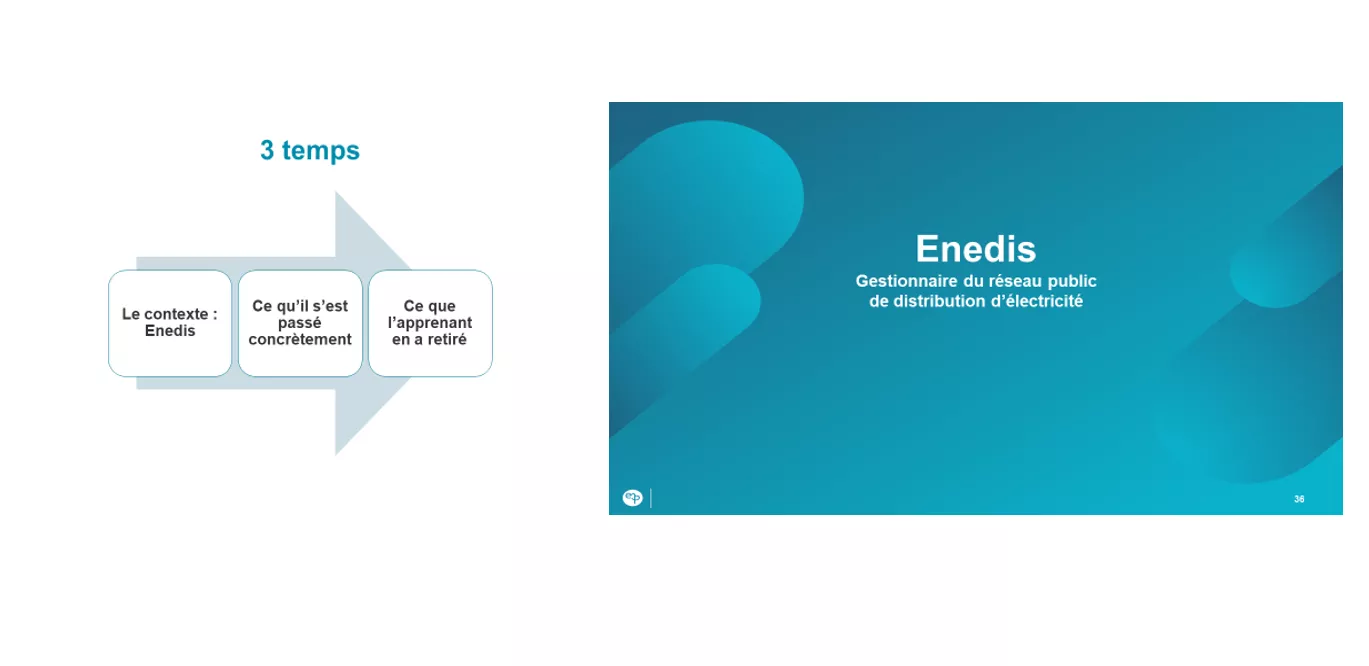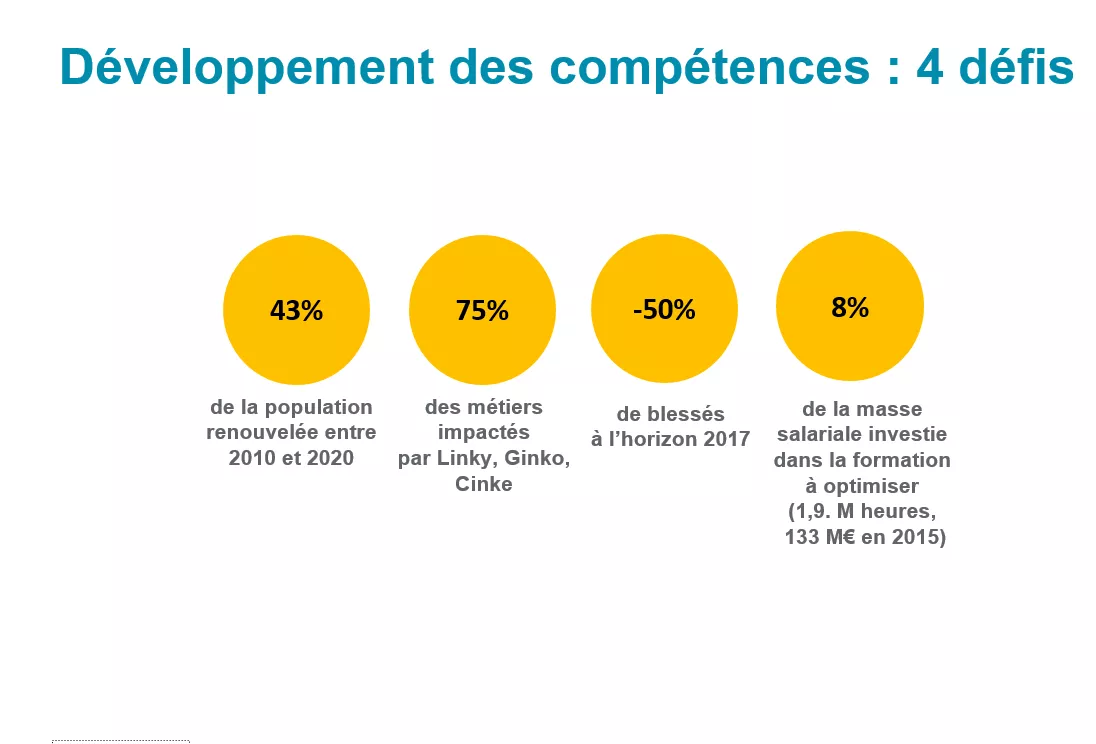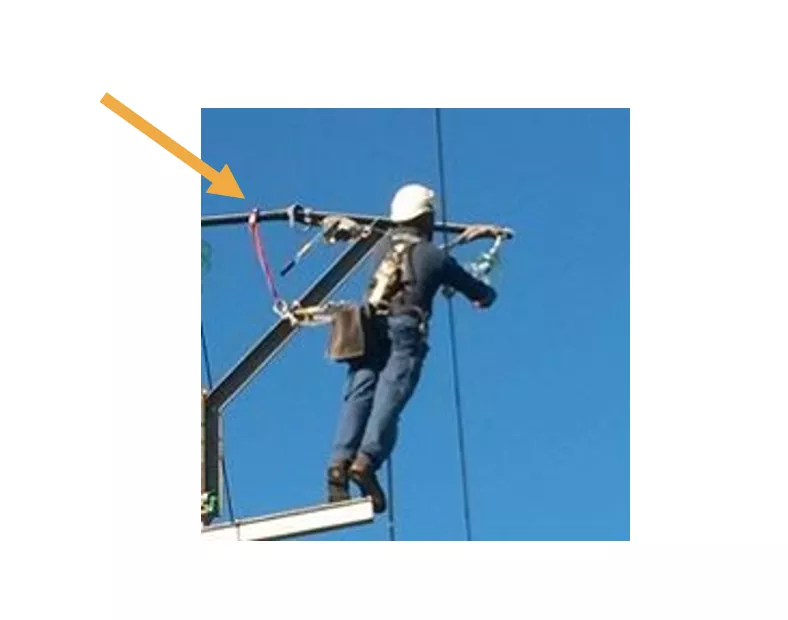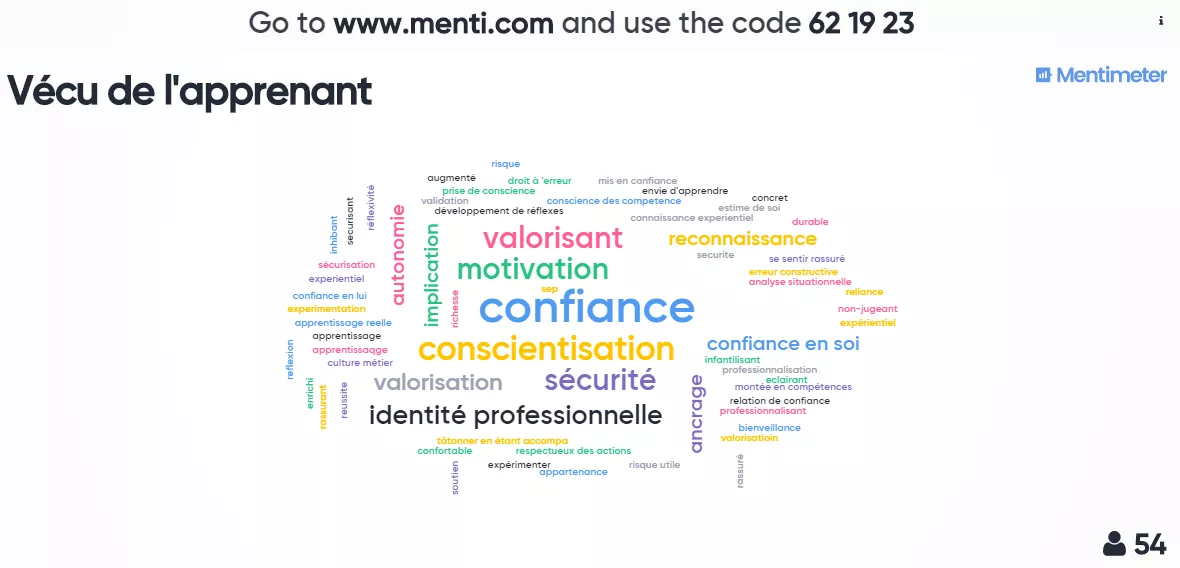Workplace learning support at ENEDIS
[Translation (French - English): EPALE France]
From 2013 onwards, Enedis (the French public electricity system operator) first experimented with, then deployed, workplace training on a grand scale. In the context of my PhD in Educational Science, I had the opportunity to observe AFEST (Action for Workplace Learning) support within the company, and to interview trainees just afterwards …


The Enedis mission is to manage the public electricity system over 95% of mainland France. The company has approximately 39,000 employees.

Within Enedis, the role of the system's service technicians (today called versatile service technicians) is to maintain, troubleshoot, and develop the system. In view of the characteristics of the profession (mentioned in the slide), it's a job where the ability to analyse the situation is crucial.

In the light of the four challenges listed above, the company decided to experiment with, and then deploy 'Workplace Training and Professional Development' on a large scale. (Workplace Training and Professional Development is the term adopted internally to designate AFEST).

Enedis has formalised WTPD in the following way:
WTPD support is not intended to assess, but to help the trainee to progress;
the supporter is a colleague of the trainee, and has no hierarchical relationship with him; he is recognised by his business expertise and his sense of pedagogy; he was designated by his manager to carry out WTPD support and has volunteered for this;
the observed situation lies at the heart of WTPD support, which is to say that the trainee works in a real-life situation under the watchful eye of his supporter. The latter does not intervene unless a serious mistake is about to be committed. Then comes the debrief: the supporter's role is to question the trainee in such a way that he himself realises what he has, and has not yet, mastered. During these two phases, the manager is not present;
before and after WTPD support, there are interviews with the manager, the trainee and the supporter. Beforehand, the aim is to identify training progress objectives as well as to plan WTPD support. Afterwards, it is to consider the pros and cons.

The three stakeholders to whom we are going to speak are deeply concerned in the WTPD programme. During the WTPD support Maxime (the manager) was, as expected, absent. She was only involved beforehand and afterwards.

The WTPD support observed had to do with an electrical generator connection.


During the yard, the supporter intervened once with the works manager (the person in charge of the situation) to ask that it should be Hervé (the trainee) who climbed the pole and who would therefore see the generator connection (the 'sensitive' part of the situation).
Overall, Hervé carried out a very good operation: he took the initiative (site marking, preparing equipment, etc); and he listened to instructions & advice from his colleagues when he experienced difficulties at the top of the pole. He also fully understood the checks required to manage the electrical risk.
Hervé only made one mistake. This concerned his work at the top of the pole. Instead of putting his 'tie' (shown in red on the photo) at head height, he left it down at the level of his feet. Result: if he slipped, the height he fell would be greater.
During the debrief, through his supporter's questioning, Hervé went back
· to a problem he had found at the top of the pole,
· on his checks in terms of the electrical risk.
A considerable time was allowed for this analysis. The supporter questioned Hervé, to help him remember exactly what he had done. He also questioned him to enable him to consider the consequences of his responsibility. Finally, the supporter explained the way he should have acted. The supporter concluded the debrief by telling Hervé that he had carried out a very good intervention: "he took the initiative, he listened to advice, he asked questions".

From the research interview carried out at the end of the WTPD support phase, it emerged that Hervé appreciated WTPD support for at least 3 reasons:
- he had the impression that "someone was bothering with him";
- at the end of the support, he knew "what he did well and what he did badly"; in other words, the support helped him to position himself;
- at the end of the support, he understood that after nine months, "he was on the right track".
So far as his training goes, he mentioned several aspects: the next time, he will know how to deal with the technical problem at the top of the pole; he is now confident that he understands good behaviour/reasoning in terms of electrical risk; and he has understood how to behave in terms of his responsibilities.

The role of the AFEST trainer (the 'supporter' at Enedis) is also to create opportunities. This can clearly be seen in the support described. The supporter interceded with the person responsible for the work to ensure that it was indeed the trainee who carried out the connection. Without this intervention, the learner would probably have remained on the ground, since he was the least experienced.

Confidence - or more precisely a sense of psychological safety - is a key ingredient of AFEST. This is to ensure that the trainee feels sufficiently comfortable to ask questions, to try, to make comments; he is not afraid that the supporter (or anyone else) would consider him to be disruptive, negative, incompetent or stupid.
At the end of AFEST support, trainees often feel more confident about performing the operations on which they have been supported. In other words, their sense of personal ability (cf. the work of Bandura) is reinforced. They feel more strongly that they would succeed in carrying out the operation by themselves. However, Bandura shows that an increased sense of personal ability goes hand in hand with performance, with greater persistence in the face of setbacks.
Frédérique Gerard, manager of Entreprise&Personnel projects and Doctor in Educational Science. Fgerard@entreprise-personnel.com




